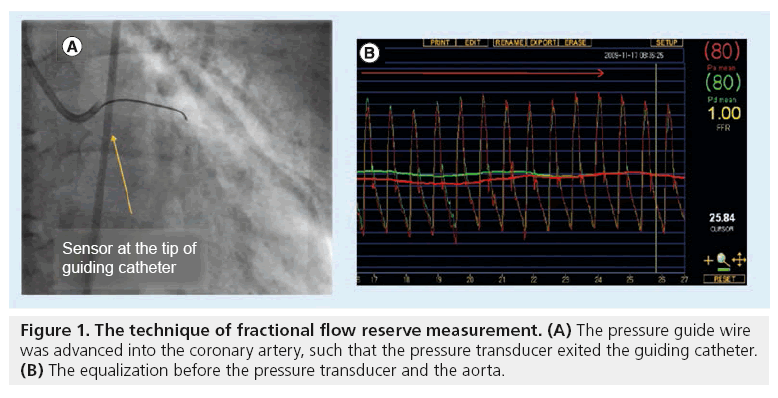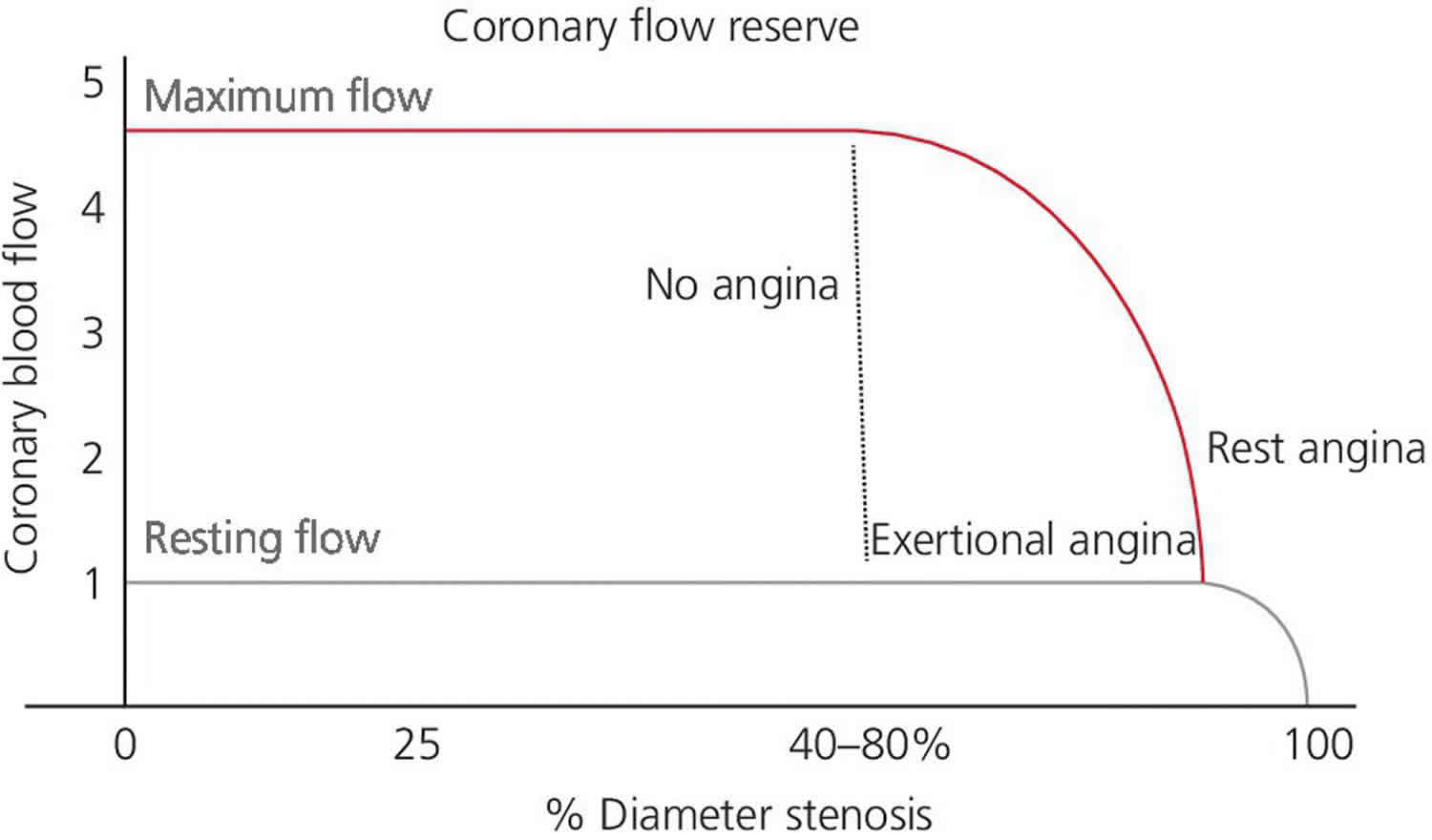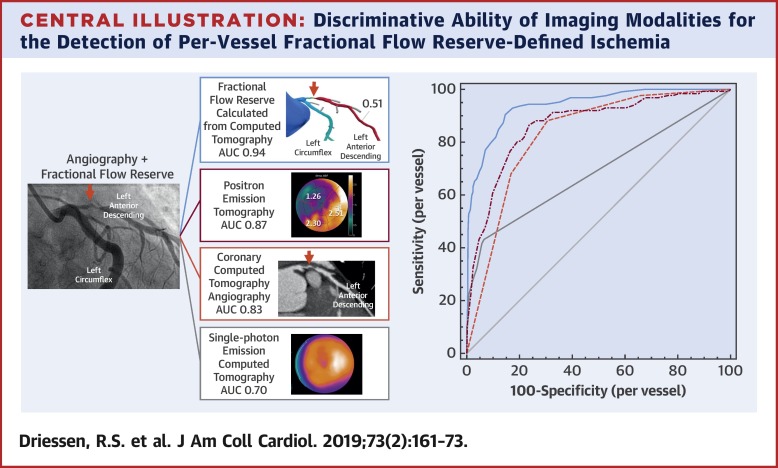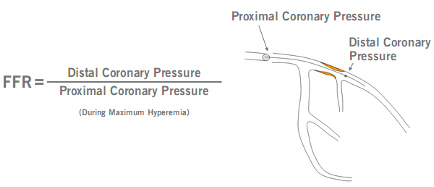fractional flow reserve test
Fractional flow reserve FFR is a diagnostic test that measures the blood flow in a diseased artery. It is a guide wire-based procedure that determines the ratio between the maximum achievable blood flow in a diseased blood vessel coronary artery and normal maximum flow.

Fractional Flow Reserve Ffr In The Presence Of Serial Stenoses In A Download Scientific Diagram
FFR is the ratio of the coronary pressure beyond the narrowing compared to the pressure before the.

. In ischemic heart disease deciding which narrowing is the culprit lesion is not always clear-cut. This highly scientific and evidence based procedure is beneficial to the patient as FFR technology not only saves lives while avoiding unnecessary surgery but also. The invasive measurement of fractional flow reserve FFR can determine the haemodynamic relevance of coronary artery stenoses.
The University of Chicago Medicine is one of a few hospitals using fractional flow reserve derived from CT FFRCT a new advanced technology that provides detailed information about your heart and how blood flows through your arteries. FFR CT greater than 08 is normal 07608 is borderline and 075 or less is abnormal. The CT angiogram fractional flow reserve or CTFFR test is a non-invasive way to diagnose the underlying cause of chest pain.
Fractional flow reserve FFR can help your doctor make that decision when the visual images from an angiogram and sometimes the results of stress testing do not provide clear guidanceFFR which is measured during an angiogram using a thin pressure wire gauges the impact of plaque build-up by comparing the pressure in the artery beyond the constricted area. The coronary pressure wire is a small wire with a pressure sensor near its tip that can be placed beyond the moderate narrowing. Fractional flow reserve FFR is an index that can be measured with a coronary pressure wire in a patient with a moderate narrowing of unclear significance.
Sensitivity 88 Specificity 100. Fractional flow reserve FFR measurement involves determining the ratio between the maximum achievable blood flow in a diseased coronary artery and the theoretical maximum flow in a normal. These arteries bring oxygen-rich blood to the heart to be pumped throughout the rest of the body.
The most frequently used pressure-derived index to assess stenosis severity the fractional flow reserve FFR has long been considered the gold standard for this purpose despite the fact that the FFR assesses solely epicardial stenosis severity and aims to estimate coronary flow impairment in the coronary circulation. Fractional flow reserve FFR is the invasive physiologic gold standard for assessing the clinical significance of coronary arterial stenosis while CFR also known as myocardial flow reserve or MFR is the noninvasive gold standard for assessing the clinical significance of a given coronary stenosis. FFR is defined as a ratio of the maximal myocardial blood flow in the presence of a stenosis to the theoretical normal maximal flow in the same distribution.
Fractional flow reserve FFR-guided coronary artery bypass graft CABG surgery has been associated with lower number of graft anastomoses lower rate of on-pump surgery and higher graft patency rate as compared with angiography-guided CABG. In the United States the real-world feasibility and outcome of using fractional flow reserve from coronary computed tomography angiography FFR CT is unknownWe sought to determine whether a strategy that combined coronary computed tomography angiography CTA and FFR CT could safely reduce the need for invasive coronary angiography ICA as compared. A fractional flow reserve FFR is a procedure done during cardiac catheterization to estimate the degree of blockage in the coronary arteries.
The decision to perform a percutaneous coronary intervention PCI is usually based on angiographic results alone. To evaluate lesion-specific ischemia FFR CT is measured 2 cm distal to a stenotic lesion. Measuring blood flow in the hearts coronary arteries.
FFR-guided percutaneous coronary intervention in stable coronary artery disease has been assessed in three seminal clinical trials and the indications for FFR assessment are expanding into other clinical scenarios. Fractional flow reserve FFR is an invasive measurement developed in 1990s for evaluation of functional significance of stenoses in the epicardial coronary artery. The CTFFR test makes it possible to reduce the need for invasive procedures and reach a confident decision about a heart condition and appropriate treatment.
To measure the FFR of a given coronary lesion a wire. Determination of FFR is recommended in coronary artery stenoses with a luminal diameter narrowing between 50 and 90 if no non-invasive proof of ischaemia is available. This test may be considered medically necessary when CCTA shows coronary artery disease CAD of uncertain functional.
FFR and CFR generally have a positive association such that low CRF correlates with. Fractional flow reserve FFR is a reference invasive diagnostic test to assess the physiological significance of an epicardial coronary artery stenosis. Fractional flow reserve FFR is an invasive procedure used during coronary angiography to determine the functional significance of coronary stenoses.
Fractional flow reserve also known as FFR is a measurement of how well blood can flow through the coronary arteries. Randomized clinical trials have reported improved clinical outcomes with. Angiography can be used for the visual evaluation of the inner diameter of a vessel.
Background Fractional flow reserve FFR defined as the ratio of maximum flow in the presence of a stenosis to normal maximum flow is a lesion-specific index of stenosis severity that can be calculated by simultaneous measurement of mean arterial distal coronary and central venous pressure P a P d and P v respectively during pharmacological vasodilation. Narrowing or blockages in these arteries is called coronary artery disease. Fractional flow reserve FFR is a technique used in cardiac catheterization to measure pressure differences across a coronary artery stenosis.
Noninvasive estimated coronary fractional flow reserve FFR derived from coronary computed tomography angiography data using computation fluid dynamics physiologic simulation software. Its use is particularly helpful in intermediate or angiographically ambiguous lesions in the absence of noninvasive functional studies. 78 Notably in the Fractional Flow Reserve Versus Angiography for Multivessel.
Fractional Flow Reserve 075 Exercise Test Thallium Scan Stress Echo Pijls et al New EnglJ Med 19963341703 FFR in Intermediate LesionsFFR in Intermediate Lesions FFR 075. CT fractional flow reserve FFR CT is a physiologic simulation technique that models coronary flow from routine coronary CT angiography CTA. Fractional flow reserve FFR is an invasive procedure used during coronary angiography to determine the functional significance of coronary stenoses.
FFRCT identifies exactly where low blood flow exists and indicates how severe the. Fractional flow reserve FFR defined as the ratio of maximum flow in a stenotic artery to maximum blood flow if the same artery were normal is an invasive technique to determine lesion-specific ischaemia and can assist in guiding coronary revascularisation. Its use is particularly helpful in intermediate or angiographically ambiguous lesions in the absence of noninvasive functional studies.
Fractional flow reserve provides a functional evaluation by measuring the pressure decline caused by a vessel narrowing. Fractional flow reserve FFR measurement involves determining the ratio between the maximum achievable blood flow in a diseased coronary artery and the theoretical maximum flow in a normal coronary artery to determine the.

Fractional Flow Reserve A New Paradigm For Diagnosis And Management Of Patients With Coronary Artery Disease

Fractional Flow Reserve Ffr Baseline Pressure Distal Pd And Aortic Download Scientific Diagram

Concept Of Fractional Flow Reserve Fractional Flow Reserve Ffr Is Download Scientific Diagram

Coronary Flow Reserve And Fractional Flow Reserve Uses Complications

Fractional Flow Reserve Ffr Fractional Flow Reserve Ffr Is Used By Apollo Gleneagles Medium

Invasive Fractional Flow Reserve Ffr In The Catheter Laboratory To Download Scientific Diagram
The Evolving Story Of Fractional Flow Reserve Ct Cardiac Interventions Today

Impact Of Hydrostatic Pressure On Fractional Flow Reserve In Vivo Experimental Study Of Anatomical Height Difference Of Coronary Arteries Journal Of Cardiology

Multivessel Percutaneous Coronary Intervention Guided By Fractional Flow Reserve Radcliffe Cardiology

Comparison Of Coronary Computed Tomography Angiography Fractional Flow Reserve And Perfusion Imaging For Ischemia Diagnosis Journal Of The American College Of Cardiology X Mol

Fractional Flow Reserve Simple Knowledge Base

Fractional Flow Reserve An Overview Sciencedirect Topics

Fractional Flow Reserve Ffr Cathlab Com

Fractional Flow Reserve Ct In A 61 Year Old Male With Typical Angina Download Scientific Diagram

Theoretical Expressions Of Ffr And Cfr Ffr Can Be Expressed As A Download Scientific Diagram

The Distribution Of Values For Fractional Flow Reserve Ffr Download Scientific Diagram

Fractional Flow Reserve Coronary Cta Youtube

Fractional Flow Reserve Coronary Flow Reserve Imr Microvascular Resistance

Diagnostic Accuracy Of Diastolic Fractional Flow Reserve For Functional Evaluation Of Coronary Stenosis Diastole Study Jacc Asia